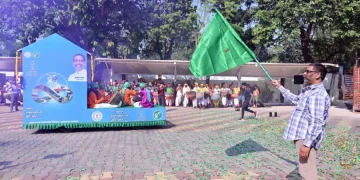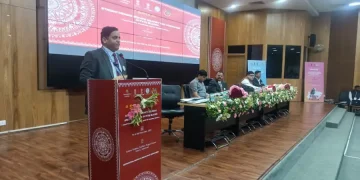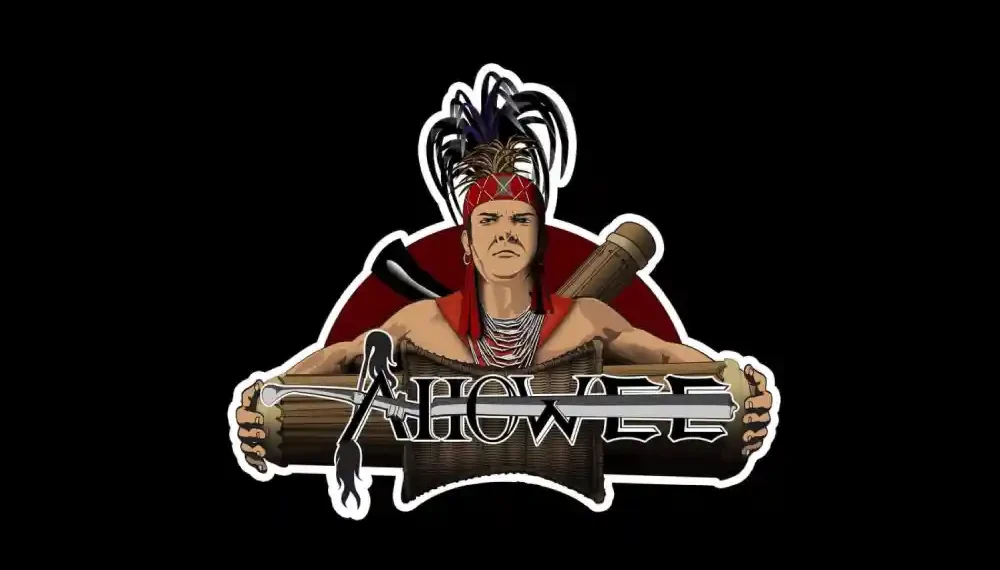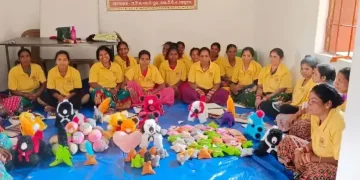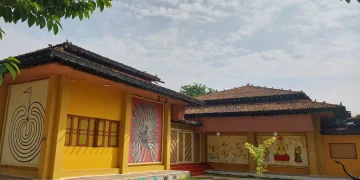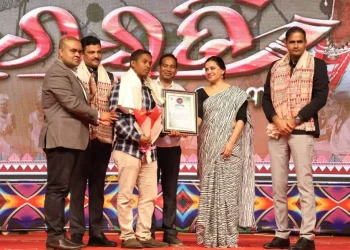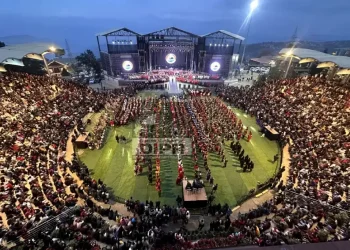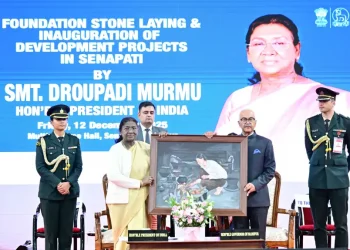Kurseong (West Bengal)
The Ahowee band has produced four songs namely Apa de Angko, a story of a Garo woman and her tragic life and Nokpante, which tells the story of a traditional boys’ dormitory where boys, after hitting puberty, were sent to become men and face the outside world. The song questions the corrupt system that doesn’t serve for the betterment of people.
Then came Dania describing a pre-sowing ceremony held at the chief’s house in Songsarek; and the most recent song, Saljong Tasin Me.chik, which is based on an ancient Garo folktale in which the son narrates the story.
Their song, Saljong Tasin Me.chik, was released in January 2024. They had started working on the song in 2016. In the Garo culture, it is a well-known folktale that is passed on from one generation to the next. The mythological tale describes how the underworld and heaven first became at odds. The poem “Saljong Tasin Me.chik” by Monensing R. Sangma served as the basis for the song’s lyrics.
The band began working on the song in 2016 and released the music video seven years later. Several senior members quit the band after realising they would never be able to write the ideal melody for the song. Even though they wanted new members, it was crucial to pick patient musicians who could handle the challenge of finishing the project. That’s when they found their current bandmates, they shared with The Indian Tribal.
They emphasised: “We must first understand Saljong Tasin Me.chik’s background before delving into the specifics of the song’s creation and the response of the listeners. The protagonist of the tale is a goddess of the skies, the ten thousandth niece of Misi Saljong, the Sun god and procurer of bountiful harvest. The Goddess was a celestial beauty to behold, ethereal and divine. She looked like the deity of the heavens because she was neither too pale nor too brown, her lips were plump and red, and her complexion was as radiant as porcelain clay.
“Because she was in love with the underworld prince, she left heaven to marry him. Before getting married, a woman would live with her suitor’s family to assist with everyday household work, according to a significant ancient ritual known as Cha.senga. For the man she loved, the goddess was willing to put up with whatever suffering her in-laws would inflict on her.
“On her journey, she carried the finest wine, wrapped in a silk cloth and propped on her back. She wrapped the costliest white linen around her neck to her waist, symbolising her purity. Her hair was secured in a bun with berries-like crimson thread interweaved throughout. She wore a traditional necklace known as a Ripok Do.katchi, which is crafted from valuable stones.
“Upon meeting her partner, she was ecstatic to spend the rest of her life with him. Her attempts to court the prince of the underworld and win him over were met with rejection. After killing her, he eats every last piece of flesh. Word spreads to the skies about their daughter’s horrific death. With a cry of rage, the gods demand retribution. The two clans’ fight thus breaks out.”
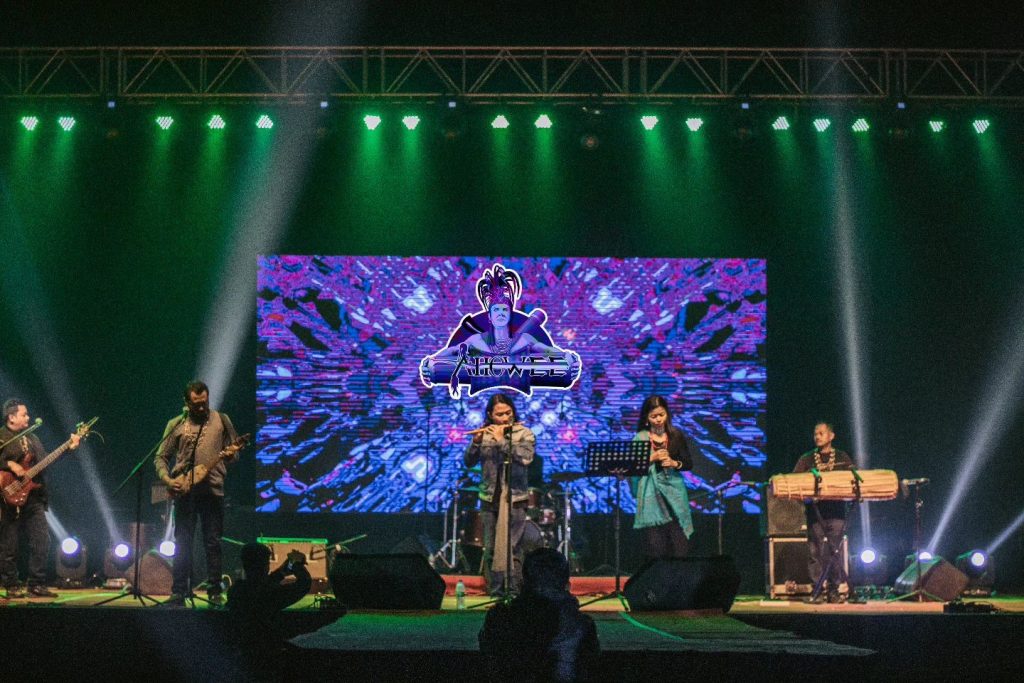
They masterfully captured the folktale with a rhapsodic symphony. The story within the story is intricately woven. Before the advent of electronic gadgets, stories were told in Gahon (theatre). The sound of the story being told in Gahon is skillfully incorporated at the beginning and in the middle of the song.
It doesn’t disrupt the flow of the song but rather takes us back to the authentic storytelling of the past. The progression in the song clearly depicts the change in the plot; for a non-Garo person listening to the song for the first time, they can distinctly discern the change in plot, which also builds suspense and appreciation for the composer.
Everyone in the team put in seven years of arduous effort to craft the ideal song while honouring the oral history-telling tradition of the Garo tribe. This included writing the music, writing the script, rewriting, and eliminating ideas.
The band requested sponsorship from politicians and government agencies to finance the endeavour but to no avail. Still, they didn’t give up; they did shows to collect funds. They persisted in the face of obstacles, both professional and personal. During this period, Jaksram K. Marak, the music video’s animator, also went through personal struggles.
Following its debut, the music video received positive feedback from the public. In just seven months, the video on their channel has received 31,000 views. Even though the song and music video were well-received by the crowd, loving and applauding the song and music video, many expressed disapproval of the Goddess’s fair complexion, blue eyes, and blonde hair. Few people took it personally and outright denounced it.
For some, it was an endorsement of white supremacist ideology and colonialism. The band members quickly expressed regret for offending the feelings of their community members when The Indian Tribal questioned them about their choice to create a lead that didn’t resemble the Garo women.
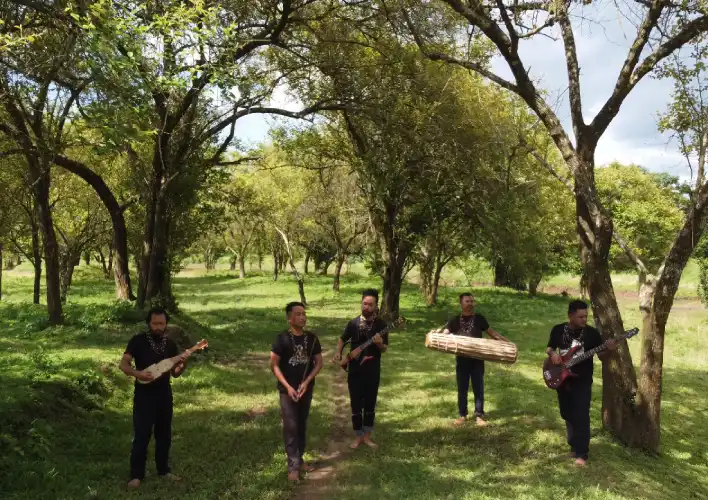
Gabriel and Gifford made it clear that the band’s intention was not to praise colonization or to demonize their tribe. The Goddess’s pale skin symbolised the sun’s splendour, her blue eyes represented the sky, which is also thought of as heaven, and her hair hue depicted the lush field of ripping crops that swayed in the field. The Goddess was the daughter of the sun god who gave a good harvest. They emphasized that the mythology carries a metaphorical meaning of how one should live their life, and their goal was to convey the essence of the folklore.
The band members have expressed regret for the anguish their fans may have felt. They vowed not to let them down again and to show that they are totally focused on producing their new song, which they are currently filming. Ahowee pledges to deliver another catchy tune that will appeal to all while also promoting culture.
They also expressed to try harder to be more regular in writing new music and doing band activities.






